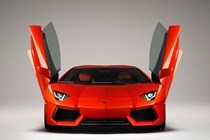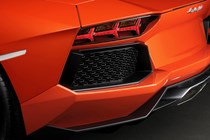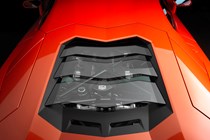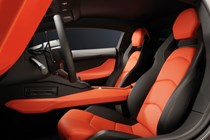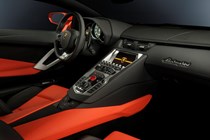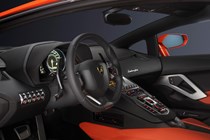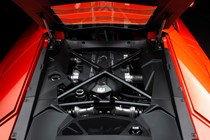
Lamborghini Aventador Coupe (2011-2022) interior, tech and comfort
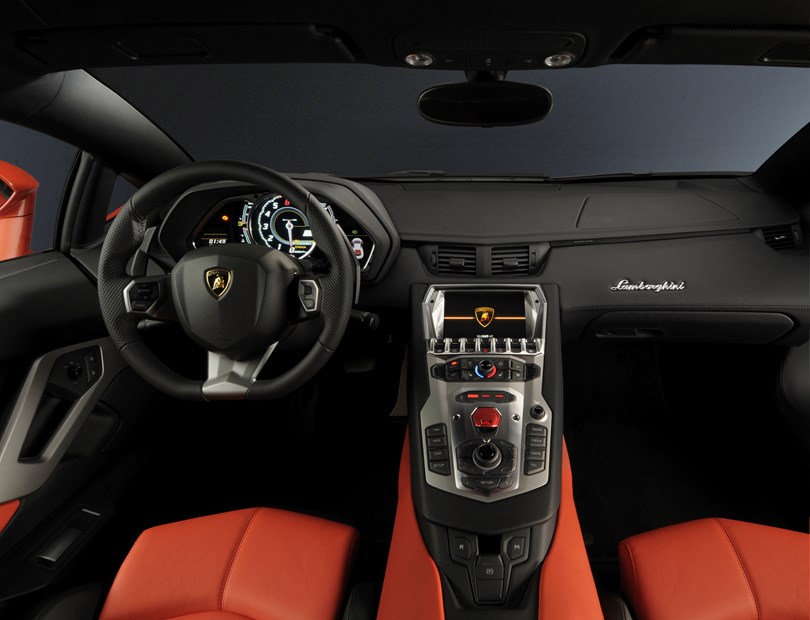
The Aventador can intimidate on first acquaintance. It has a racecar-like seating position, a dramatically raked windscreen, poor rear visibility and rather scatter-gun controls, which can bewilder the uninitiated; the engine start button, for instance, is accessed by flipping up a bright red, fighter-jet-style toggle switch.
The gearshifts can either be taken care of automatically or activated manually via shift paddles either side of the steering wheel, but you’ll need to press a button on the centre console to select reverse, and pull the right-hand shift paddle to get back to first gear. It feels a bit fiddly at first, and can add to the stress of a three-point turn.
But the large mirrors and reversing camera do help, and the Aventador is less physically demanding to drive than initial impressions suggest: the steering is quite light, the seats are acceptably comfortable (in the case of the S) and it’s easy to quickly feel at home.
The infotainment is shared with Audi, with functions on the central screen adjusted via a rotary controller and by buttons clearly borrowed from the German manufacturer. The shared hardware does detract from the specialness of the Aventador’s cabin, and yet the infotainment system still lags behind the best equipment fitted to the latest TT.
But the Aventador interior also feels very radical and alien in a way that evokes the idiosyncratic supercars of years gone by. It’s hard not to like it for that, and you soon learn its quirks.
When it was first launched, the Aventador suspension was unnecessarily harsh. While the chassis is still firm, it’s now impressively compliant for such a driver-focused machine, both on S and SV versions. The SV deserves particular praise, its highly expensive Ohlins shock absorbers delivering exceptional composure on a racetrack, with surprising comfort on the road.
It’s a shame, then, that the SV’s sports seats are so uncomfortably firm, feeling much like wooden structures thinly upholstered in Alcantara. The seats in the S are far more forgiving, yet still supportive. It’s designed to be the more usable road car, and it is.
Firm suspension, huge tyres and a rigid carbon fibre structure does mean a decent amount of road noise makes its way through to the cabin, especially the stripped-out SV model. But mostly, it’s the noise of that roaring V12 that shouts loudest. Owners are unlikely to complain about that and, really, you could cover hundreds of high-speed miles in the Aventador without the novelty wearing thin, especially if you’re driving the S.
More likely, using the Aventador around town will be more tiresome. You need a certain athleticism to jump in and out of its low-slung cockpit, and its gearbox and limited rear-visibility don’t make reversing the easiest exercise – thank goodness for the standard reversing camera.



